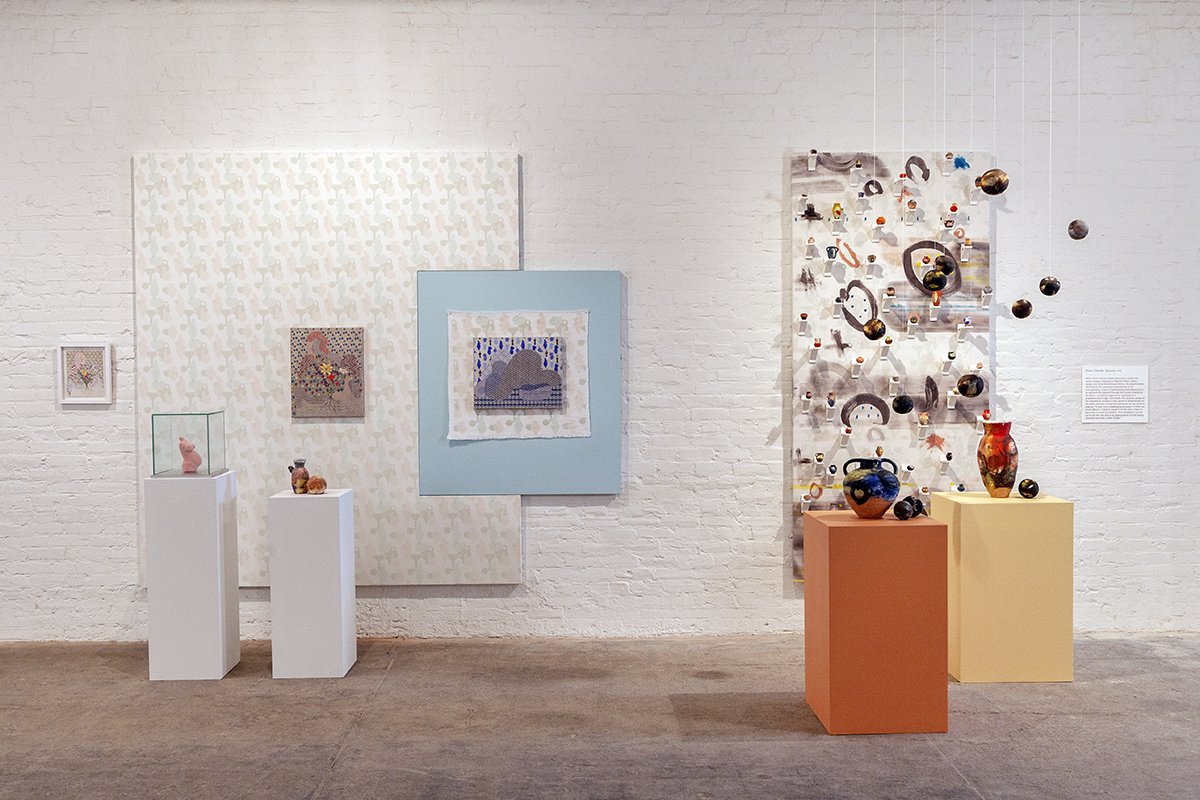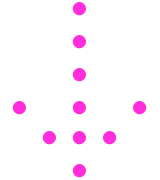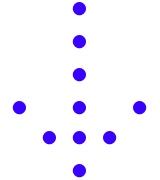A collaboration with Philadelphia’s Clay Studio, Hard/Cover includes important artworks from past residents Louise Bourgeois (1911-2010), Viola Frey (1933—2004), Toshiko Takaezu (1922—2011), and Betty Woodman (1930—2018), as well as new works by five contemporary artists who have been invited to expand their practice with screenprinting. These artists include Woody De Othello (Oakland, CA), Jane Irish (Philadelphia, PA), Mark Barrow & Sarah Parke (Queens, NY), and Shino Takeda (Brooklyn, NY).
Hard/Cover looks closely at the relationship between time, process, and space in developing an interdisciplinary practice. Framed by celebrated works from past Artists-in-Residence working at FWM in the late 1980s and early ‘90s, as well as tableaus and scenes created by contemporary artists, the exhibition considers how changes in one’s creative practice can open up new pathways of conveying integral ideas. For Frey, Takaezu, and Woodman, their collective shift away from utilitarian function toward aesthetic and emotive properties illustrated tension in a world that did not easily make room for female artists with a material-focused practice. Now, more than three decades later, artists such as De Othello, Irish, Barrow Parke, and Takeda can employ interdisciplinary practices that move between function, pleasure, and critical discourse.
The opportunity to work with the professional artists at FWM can be best described as an invitation to collaborate and experiment, no matter the material or process. Over the past 40+ years, this invitation has materialized as new performances, material tests, community collaborations, sculptural works, and video pieces, to name a few. The premise of Hard/Cover stems from an investigation into some of the Workshop’s earliest residencies, where celebrated artists benefited from three-week opportunities to discover screenprinting that would later inform their burgeoning contemporary art practices. With the support and insight of three foundations, selected works by Frey, Takaezu, and Woodman from the FWM Collection are complemented by pieces loaned directly from the artists’ estates.
Working in collaboration with FWM, Viola Frey turned her hand to wallpaper with Artist’s Mind/Studio/World, creating dynamic backdrops for her large sculptures. Betty Woodman, an artist included in the Pattern and Decoration movement, framed her ceramics with heavily decorative fabric, often with titles like “Door” or “Window.” Employing both screenprinting and ceramics helped Woodman create the illusion of a space that suggests an architecture, but with elements which aren’t quite functional. Toshiko Takaezu experimented with surface by translating her signature ceramic sculptures—rounded, closed forms called Moons—into fabric-based, screenprinted soft sculptures. Using her signature circular elements, Takaezu also experimented with clothing and wearable designs.
Inspired to see how an invitation to screenprint might translate to artists today, FWM invited five artists (including one artist collaborative) to work in their world-renowned print studios and incorporate the fabric, as well as their own works, into new installations. Woody De Othello’s tableau of a living room features newly made curtains and ceramic works, and Jane Irish’s opulent scene is reminiscent of an Egyptian den with ceramic potpourri vessels and banners overhead. Barrow Parke approached the concept of the vessel metaphorically with an eye towards design and repetition—providing the backdrop for Louise Bourgeois’ Pregnant Woman, a 2002 felt piece from the FWM Collection—while Shino Takeda took the invitation as an opportunity to shift from functional ceramic works to playing with scale and suspending new sculptures from the ceiling.
Both Hard/Cover and Elisabeth Kley’s concurrent solo exhibition, Minutes of Sand, demonstrate FWM’s renewed commitment to selected residencies focused solely on screenprinting similar to those foundational to the Workshop. The program’s collaborative focus inspires the creation of new work, contributing to a permanent collection of some 5,000 artworks and an archive that preserves and illustrates the course of artistic production. Printmaking is integral to FWM’s history and remains a vital part of its mission, now being reignited with a short-term residency program for a new cadre of artists.


 Download the Press Release
Download the Press Release